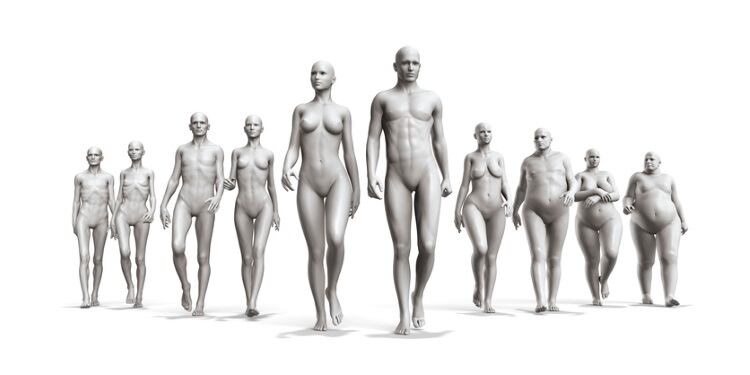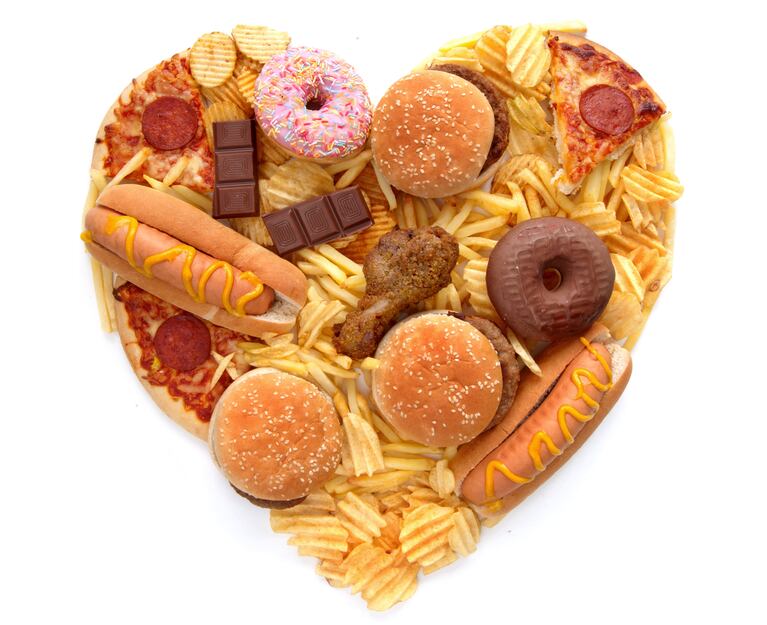It also found that these foods make up a significant part of their diet.
Based on the 2010 Healthy Eating Index – a metric created by US’s Department of Agriculture (USDA) to measure nutritional quality on a scale of one to 100 – workplace fare scored an average of 48.6 – typical of menu items at fast food restaurants.
Healthy Eating Index
The HEI is a measure of diet quality in terms of conformance with US Federal dietary guidance.
Whole grains, fruits and vegetables and lean protein sources like chicken and fish score high, while foods heavy in unhealthy fats, sodium and refined carbohydrates score low.
Lead author and epidemiologist Stephen Onufrak said the study is the first of its kind to look at what people are eating at work.
“Even though it’s not the main source of calories, [snacks obtained at work are] affecting a lot of people,” he said.
All adding to the ever-growing - and concerning - obesity pandemic.
The study – published in the Journal of the Academy of Nutrition and Dietetics – looked at data from a 2012-13 USDA Food Acquisition and Purchasing Survey to look at the eating habits of more than 5,000 working adults over a seven-day period.
It counted food purchased at vending machines or cafeterias, brought in by other employees, or obtained during meetings or other events. It did not include food brought in from home or purchased off-site.
The leading 10 sources of calories (high in solid fats, added sugars or sodium) obtained from work were pizza, sandwiches, sodas, cookies or brownies, burgers, donuts or pastries, burritos or tacos, chicken and potato chips
The biggest culprit = freebies
According to the CDC, 30% of Americans grab a bite to eat from the company cafeteria, while 50% gobble down a snack from the vending machine.
Study highlights
- 23.4% of working adults obtained food from work once a week
- 11% of workers obtained food three times per week
- 5% percent of workers did so five or more times per week
- 16.8% had at least one ‘freebie’
- 9.2% had at least one purchased acquisition
- 5% scored free food daily
- 19.4% of women were more likely to have free work food versus 14.5% of men
- The top free food at work was pizza, accounting for around 178 calories per week
- Cakes and pies accounted for 32 free food calories
However, the worst perpetrators were the ‘freebies’, accounting for 70% of the added 1,300 calories per week Americans consume at work.
17% of the respondents stated they made up a daily ‘meal’ – at least once a week – from company meeting leftovers or when celebrating someone’s birthday.
“These foods were high in empty calories, sodium and refined grains, and low in fruits and whole grains,” said Onufrak.
Education, gender and race
The study also shed light on the demographic factors associated with workplace eating habits, with education level being the strongest predictor.
“College graduates were about twice as likely as those with less than a high school diploma to get food at work during the week,” said Onufrak.
Previous research by Onufrak suggests college-educated adults are more likely to work for large employers, which, in turn, are more likely to have cafeterias and vending machines.
The current CDC study also found differences between women and men — with women being more likely to obtain free food at work — and among different races and ethnicities – with Hispanics being the least likely to get food at work.
According to the study, worksite wellness programs have been shown to be effective at changing health behaviors among employees, reducing absenteeism and health care costs.
The researchers are now looking at how these programs can affect nutrition, for example, said Onufrak, installing a policy that includes consuming a healthy option alongside pizza or cake.
Free snacks will not retain workers long term
The trend of offering free snacks started with big Silicon Valley tech companies — like Facebook and Google — and soon spread across the US.
According to research from the Society for Human Resource Management, 32% of employers offered company-paid snacks in 2017, up from 22% in 2016.
However, Manhattan-based recruiting and staffing firm The Execu Search Group says it is a misconception that millennials – currently the largest generation in the workforce – want this benefit.
“[Free food] is great. But some companies are using it as incentive to keep people – and that’s not going to keep people there,” said Edward Fleishman, CEO of The Execu Search Group.
Instead, workers – and millennials in particular – want flexibility of hours and the flexibility to work from home when they need or want to, he added.
Studies
Foods and Beverages Obtained at Worksites in the United States
Author: Stephen J. Onufrak, Hatidza Zaganjor, et al
Journal of the Academics of Nutrition and Dietetics
DOI: https://doi.org/10.1016/j.jand.2018.11.011
Update of the Healthy Eating Index: HEI-2010
Authors: Patricia M. Guenther, Kellie O. Casavale, et al
J Acad Nutr Diet. 2013 Apr; 113(4): 10.1016/j.jand.2012.12.016




